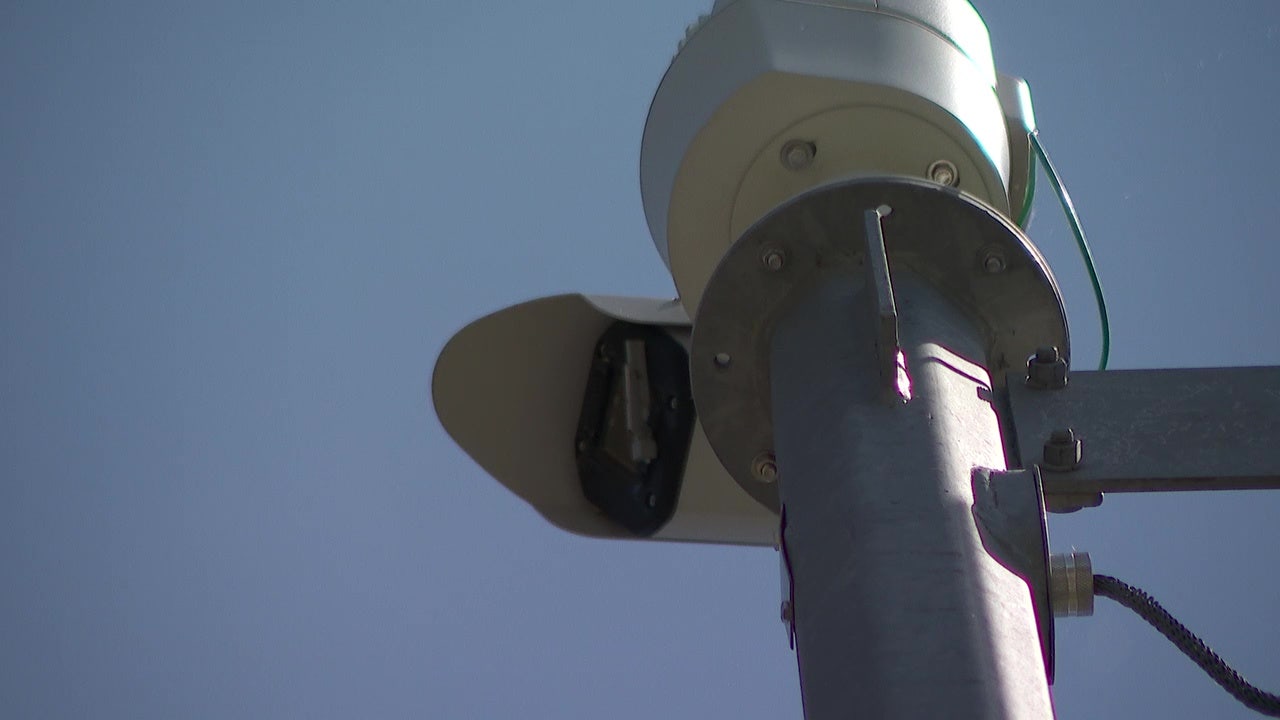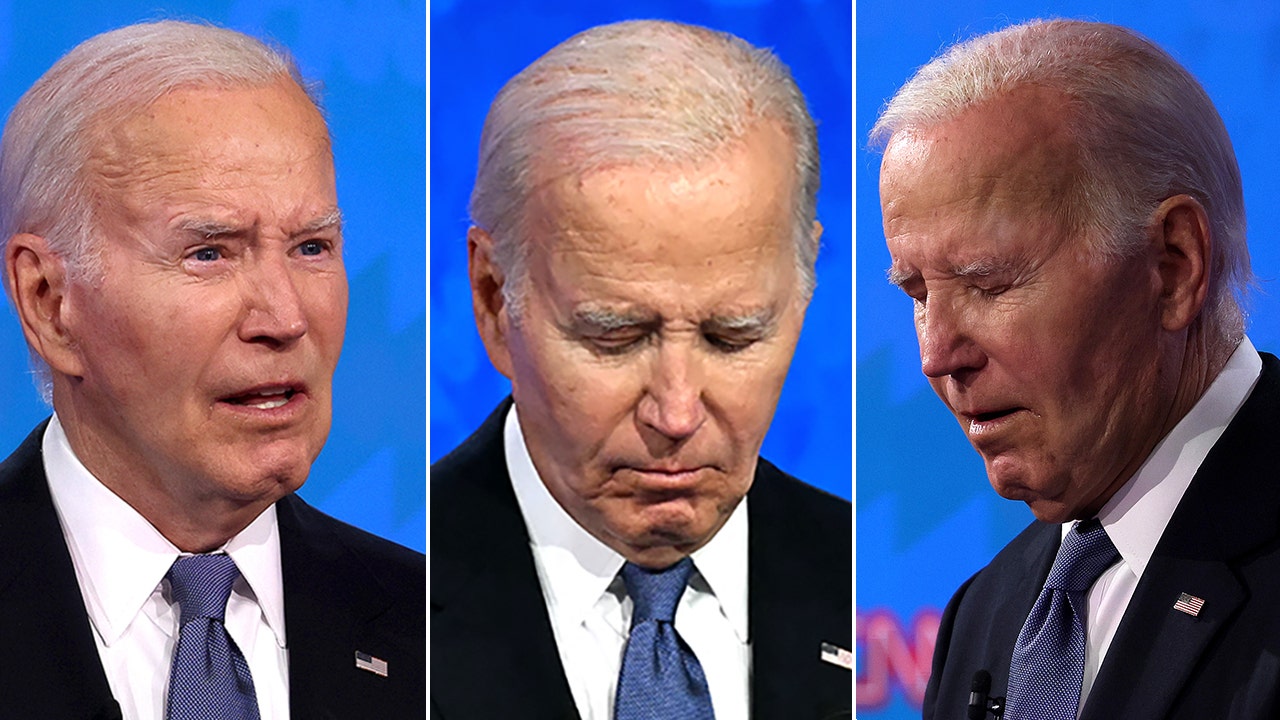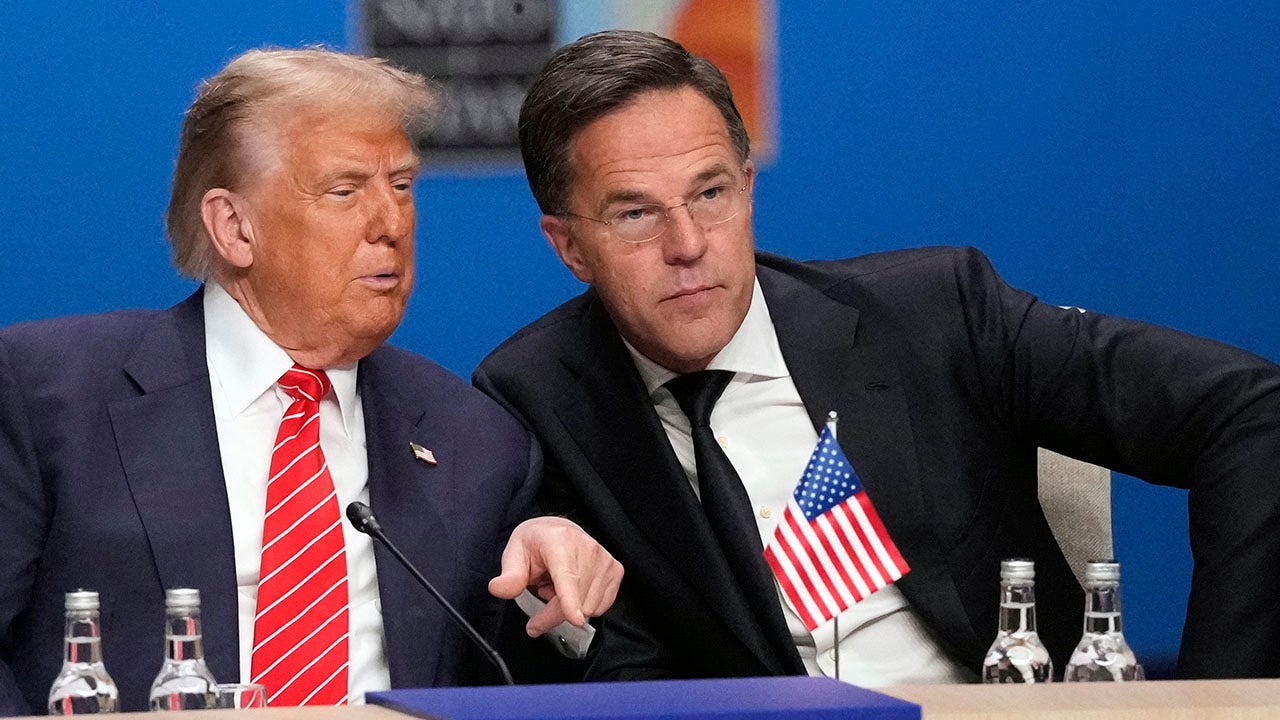Reporting by Michael Martina and Greg Torode; Additional reporting by Trevor Hunnicutt in Washington, and Antoni Slodkowski and Laurie Chen in Beijing; Editing by Don Durfee and Tom Hogue
News
What China’s Xi gained from his Biden meeting
/cloudfront-us-east-2.images.arcpublishing.com/reuters/P47KDZL3A5K6BFNN2DUWCMTE3Y.jpg)
SAN FRANCISCO/HONG KONG, Nov 16 (Reuters) – When Chinese President Xi Jinping met executives for dinner on Wednesday night in San Francisco, he was greeted with not one, but three standing ovations from the U.S. business community.
It was one of several public relations wins for the Chinese leader on his first trip in six years to the United States, where he and President Joe Biden reached agreements covering fentanyl, military communications and artificial intelligence on the sidelines of the Asia-Pacific Economic Cooperation summit.
All three were outcomes the United States had sought from China rather than the other way around, said two people briefed on the trip.
But Xi appeared to have achieved his own aims: earning U.S. policy concessions in exchange for promises of cooperation, an easing of bilateral tensions that will allow more focus on economic growth, and a chance to appeal to foreign investors who increasingly shun China.
China’s economy is slowing and earlier this month it reported its first quarterly deficit in foreign direct investment. And the ruling Communist Party has battled political intrigues that have raised questions about Xi’s decision-making, including the sudden and unexplained removals of his foreign minister and defense minister.
“If the U.S. and China can manage their differences … it will mean that Xi Jinping doesn’t have to divert all of his attention to that (bilateral relations),” said Alexander Neill, an adjunct fellow at Hawaii’s Pacific Forum think-tank.
“He needs to focus on his domestic agenda which is incredibly pressing.”
DROPPING SANCTIONS FOR COOPERATION
Securing Xi’s promise of Chinese cooperation on stemming the flow of fentanyl to the United States was high on Biden’s to-do list for the summit. A senior U.S. official said the agreement under which China would go after specific companies that produce fentanyl precursors was made on a “trust but verify” basis.
In return, the U.S. government on Thursday removed a Chinese public security forensic institute from a Commerce Department trade sanction list, where it was placed in 2020 over alleged abuses against Uyghurs, a long-sought diplomatic aim for China.
Critics warned removing sanctions against the institute signals to Beijing that U.S. entity listings are negotiable, and have questioned the Biden administration’s commitment to pressuring China over what it says is the Chinese government’s genocide of Uyghurs.
“This undermines the credibility of our entity list and our moral authority,” said a spokesperson for the Republican-led House of Representative’s select committee on China.
On top of that, Biden’s Republican opponents argue the U.S. is missing an opportunity by not leveraging China’s flagging economic momentum for more diplomatic gains.
Biden also touted as a success an agreement to resume military dialogues cut by China following then-U.S. House Speaker Nancy Pelosi’s 2022 trip to Chinese-claimed Taiwan.
But while Beijing would welcome lower tensions, this is unlikely to change Chinese military behavior the U.S. sees as dangerous, such as intercepts of U.S. ships and aircraft in international waters that have led to a number of near-misses.
“China fears hotlines could be used as a potential pretext for a U.S. presence in areas it claims as its own,” said Craig Singleton, a China expert at the Foundation for Defense of Democracies in Washington.
Biden administration officials have acknowledged that creating functional military relations won’t be as easy as semi-regular meetings between defense officials.
“This is a long, hard, slow slog and the Chinese have to see value in that mil-mil before they’ll do it. That’s not going to be a favor to us,” one senior Biden administration told Reuters in October in the run-up to the Xi-Biden meeting.
PARTNER AND FRIEND?
In his public remarks to Biden, Xi suggested China sought peaceful coexistence with the United States, and he told business leaders China was ready to be a “partner and friend” to the U.S., words partially aimed at a business community alarmed by China’s crackdown on various industries and the use of exit bans and detentions against some executives.
Similarly, Xi’s televised garden walk with Biden, and the largely respectful reception given to Xi by his American hosts, was highlighted in China’s tightly controlled media to show a domestic audience that their president is managing the country’s most important economic and political relationship.
“Xi Jinping may have made the calculation that overhyping the American threat does China and his standing in the party and the party itself more harm than good,” said Drew Thompson, a former Pentagon official who is now a scholar at the National University of Singapore.
“The fact that we are debating whether China is investible is a real problem for China.”
At the same time, Xi reiterated to Biden points that he made earlier this year to Russian President Vladimir Putin, urging the U.S. president to view U.S.-China relations through “accelerating global transformations unseen in a century.”
Analysts say that is code for the belief that China – and Russia – are remolding the U.S.-led international system.
Still, this time pragmatism may have outweighed ideology.
China recognizes it’s still necessary for its economic progress to have somewhat normal relations with the U.S. and Western countries, said Li Mingjiang, a professor at the Rajaratnam School of International Studies in Singapore.
“It’s the fundamental driving force behind the meeting.”
Our Standards: The Thomson Reuters Trust Principles.

News
What is birthright citizenship and what happens after the Supreme Court ruling?

Demonstrators hold a sign reading “Hands Off Birthright Citizenship!” outside the Supreme Court on June 27, 2025. The Supreme Court did not rule on President Trump’s controversial executive order, but it did limit lower courts’ ability to block executive actions with universal injunctions.
Alex Wroblewski/AFP via Getty Images
hide caption
toggle caption
Alex Wroblewski/AFP via Getty Images
After the Supreme Court issued a ruling that limits the ability of federal judges to issue universal injunctions — but didn’t rule on the legality of President Trump’s executive order on birthright citizenship — immigrant rights groups are trying a new tactic by filing a national class action lawsuit.
The lawsuit was filed on behalf of two immigrant rights organizations whose members include people without legal status in the U.S. who “have had or will have children born in the United States after February 19, 2025,” according to court documents.
One of the lawyers representing the plaintiffs, William Powell, senior counsel at the Institute for Constitutional Advocacy and Protection at Georgetown Law, says his colleagues at CASA, Inc. and the Asylum Seeker Advocacy Project think that, with the class action approach “we will be able to get complete relief for everyone who would be covered by the executive order.”

The strategic shift required three court filings: one to add class allegations to the initial complaint; a second to move for class certification; and a third asking a district court in Maryland to issue “a temporary restraining order or preliminary injunction asking for relief for that putative class,” Powell said.
In the amended complaint, filed two hours after the Supreme Court’s ruling, the immigrant rights attorneys said that Trump’s effort to ban birthright citizenship, if allowed to stand, “would throw into doubt the citizenship status of thousands of children across the country.”
“The Executive Order threatens these newborns’ identity as United States citizens and interferes with their enjoyment of the full privileges, rights, and benefits that come with U.S. citizenship, including calling into question their ability to remain in their country of birth,” reads the complaint.
Rights groups and 22 states had asked federal judges to block President Trump’s executive order on birthright citizenship. Issued on his first day in office, the executive order states, “the Fourteenth Amendment has never been interpreted to extend citizenship universally to everyone born within the United States.”
But after three federal district court judges separately blocked Trump’s order, issuing universal injunctions preventing its enforcement nationwide, the Trump administration asked the Supreme Court to block universal injunctions altogether.
The Supreme Court did not rule on the birthright issue itself. But after the ruling, Trump called it a “monumental victory for the Constitution, the separation of powers and the rule of law,” in a briefing at the White House.
The president said the ruling means his administration can now move forward with his efforts to fundamentally reshape longstanding U.S. policy on immigration and citizenship.
Friday’s ruling quickly sparked questions about how the dispute over birthright citizenship will play out now — and how the ruling on universal injunctions might affect other efforts to push back on executive policies, under President Trump and future presidents.
“Nationwide injunctions have been an important tool to prevent blatantly illegal and unconstitutional conduct,” the National Immigrant Justice Center’s director of litigation, Keren Zwick, said in a statement sent to NPR. The decision to limit such injunctions, she said, “opens a pathway for the president to break the law at will.”
Both Zwick and Powell emphasized that the Supreme Court did not rule on a key question: whether Trump’s executive order is legal.
At the White House, Attorney General Pam Bondi would not answer questions about how the order might be implemented and enforced.
“This is all pending litigation,” she said, adding that she expects the Supreme Court to take up the issue this fall.
“We’re obviously disappointed with the result on nationwide injunctions,” Powell said. But, he added, he believes the Supreme Court will ultimately quash Trump’s attack on birthright citizenship.
“The executive order flagrantly violates the 14th Amendment citizenship clause and Section 1401a of the Immigration and Nationality Act,” Powell said, “both of which guarantee birthright citizenship to nearly all children born in the United States, with only narrow exceptions for ambassadors [and] invading armies.”
The court’s ruling set a 30-day timeframe for the policy laid out in Trump’s executive order to take effect.
“The Government here is likely to suffer irreparable harm from the District Courts’ entry of injunctions that likely exceed the authority conferred by the Judiciary Act,” a syllabus, or headnote, of the Supreme Court’s ruling states.
The majority opinion, written by Justice Amy Coney Barrett, also discusses the differences between “complete relief ” and “universal relief.”
“Here, prohibiting enforcement of the Executive Order against the child of an individual pregnant plaintiff will give that plaintiff complete relief: Her child will not be denied citizenship,” Barrett wrote. “Extending the injunction to cover all other similarly situated individuals would not render her relief any more complete.”
In her dissenting opinion, Justice Sonia Sotomayor said the ruling suggests that constitutional guarantees might not apply to anyone who isn’t a party to a lawsuit.
The concept of birthright citizenship has deep roots, dating to the English common law notion of jus soli (“right of the soil”). The doctrine was upended for a time in the U.S. by the Supreme Court’s notorious Dred Scott ruling.
Current legal standing for birthright citizenship in the U.S. extends back to the 1860s, when the 14th Amendment of the Constitution was ratified, stating, “All persons born or naturalized in the United States, and subject to the jurisdiction thereof, are citizens of the United States.”
“Any executive order purporting to limit birthright citizenship is just as unconstitutional today as it was yesterday,” Wendy Weiser, vice president for democracy at the Brennan Center for Justice at NYU Law School, told NPR.
“There is nothing substantively in the decision that undercuts those lower court opinions. The opinion just undercuts the tools available to the courts to enforce that constitutional mandate.”
News
Donald Trump says US-China trade truce has been ‘signed’

Unlock the White House Watch newsletter for free
Your guide to what Trump’s second term means for Washington, business and the world
Donald Trump said on Thursday the US and China had signed a trade deal, two weeks after saying they had reached an understanding in London about how to implement a truce in the countries’ dispute.
“We just signed with China yesterday,” the US president said at the White House on Thursday, without providing any details.
A White House official said the US and China had “agreed to an additional understanding for a framework to implement the Geneva agreement”, in a reference to the trade talks that the nations held in May, when they first negotiated a truce.
Two people familiar with the situation said on Thursday that Washington and Beijing appeared to have put in writing what had previously been negotiated but not included in a formal document. Ahead of the London talks, US officials had said they wanted to reach a handshake deal with the Chinese, but some experts said it was naive not to have a document.
The agreement in Geneva involved significantly reducing tariffs on each other for 90 days while they tried to hammer out a comprehensive trade accord. The deal had faltered, however, over disagreements about Chinese rare earth exports and US export controls.
Earlier this month, Treasury secretary Scott Bessent led a team that included commerce secretary Howard Lutnick and US trade representative Jamieson Greer for talks in London with Chinese vice-premier He Lifeng to resolve the impasse. After two days, the sides said they had reached a deal but provided no details.
On Thursday, Lutnick said they had completed the deal that was originally reached in Geneva. “That deal was signed and sealed two days ago,” he told Bloomberg television.
“While we need to look at the details, if the deal brings more certainty, predictability and fairness into US-China trade it will be a great victory for the people of both countries,” said Sean Stein, president of the US-China Business Council.
China’s commerce ministry on Friday said the two sides had “further confirmed” the details of the framework agreement reached in London.
It added that approvals of export applications for controlled items would be issued “in accordance with the law’, and that the US side would also lift “restrictive measures” taken against China, without giving further details.
The purported deal comes as the Trump administration works to reach broad agreements on trade with multiple partners ahead of a July 9 deadline when “reciprocal” tariffs the president announced in April would be reapplied. Those levies, of up to 50 per cent on most US trading partners, had been temporarily lowered to 10 per cent for 90 days to allow foreign countries to negotiate.
US officials have since been holding intensive talks with countries including India, Vietnam, South Korea, Japan and the EU to reach permanent settlements.
Only the UK has reached a trade agreement with the US, while China has secured lower “reciprocal” tariffs of 10 per cent following a period of tit-for-tat tariff increases. Trump has also left in place additional tariffs of 20 per cent on all Chinese imports, citing Beijing’s failure to slow the flow of precursors of the drug fentanyl from China.
The administration is also looking at applying global tariffs to imports in sectors including semiconductors and consumer electronics, aerospace parts, lumber, copper, pharmaceuticals and critical minerals.
Additional reporting by Wenjie Ding in Beijing and Wang Xueqiao in Shanghai
News
Solar manufacturing is booming. Advocates say it could go bust without incentives

An employee works on a solar panel inside a Qcells factory in Dalton, Ga.
Mike Stewart/AP/AP
hide caption
toggle caption
Mike Stewart/AP/AP
A couple of years ago, Mick McDaniel started a company in Indianapolis to make solar panels in the United States. Then-President Joe Biden had just signed the Inflation Reduction Act, a law packed with tax incentives for clean energy. America’s solar market was about to take off.
Since then, tens of billions of dollars have poured into solar factories that are operating or under development, according to the Solar Energy Industries Association, or SEIA, which advocates on behalf of the field. Once those factories are all finished, the facilities could create close to 60,000 manufacturing jobs, the trade group has said.
But those investments are now at risk.

Congressional Republicans are on the verge of rolling back clean-energy tax credits as part of a huge tax-and-spending bill that’s a cornerstone of President Trump’s second-term agenda. On the chopping block are incentives that encourage solar developers to buy American-made products, like solar panels and components.
Abruptly unwinding the incentives would threaten a decade-long push to onshore solar manufacturing and challenge China’s dominance of the sector, according to industry executives and analysts.
“What I see two years out is low-cost will once again drive demand in this market,” says McDaniel, general manager of Bila Solar. He adds, “That’s going to be a hard road for some of us who have [higher costs] than panels made over in China or Southeast Asia.”

President Trump said in a recent post on Truth Social, “I HATE ‘GREEN TAX CREDITS’” in the tax-and-spending bill Congress is negotiating.
Mark Schiefelbein/AP/AP
hide caption
toggle caption
Mark Schiefelbein/AP/AP
President Trump supported solar manufacturing in his first term
Since 2022, when Biden signed the Inflation Reduction Act into law, companies have invested $9.1 billion in U.S. solar factories that are operating and another $36.7 billion in facilities that are under construction or in development, according to SEIA.
This year, U.S. factories will be able to make enough solar panels to meet most of the country’s demand, the trade group said.
Asked about the potential impacts of ending clean-energy tax credits that help domestic solar factories, a White House spokesperson, Taylor Rogers, said in a statement to NPR that the “radical climate initiatives” of the Biden administration are costing Americans billions of dollars. “Rather than using taxpayer dollars to subsidize uneconomic energy sources to meet vague climate change goals, President Trump is unleashing energy sources that are economical and will drive down bills for everyday families,” Rogers said.

But Trump himself tried to boost U.S. solar manufacturing during his first term. In 2018, Trump approved tariffs on imported solar cells and panels after the U.S. International Trade Commission found that a flood of imports hurt American companies. In a recent post on Truth Social, Trump complained that China dominates renewable energy supply chains.
Renewables are cost competitive with fossil-fueled energy — even without subsidies, according to the financial firm Lazard. But manufacturers and industry analysts say U.S. solar developers still need incentives to use American-made products.
If the tax credits disappear too soon, companies building solar plants will “buy the cheaper foreign panels to get that cost down as much as you possibly can,” says Doug Lewin, an energy consultant in Texas. “And that leaves the American manufacturer of solar modules [and components] just stranded.”
Trump’s 2018 tariffs helped protect domestic manufacturers, says Scott Moskowitz, vice president of market strategy and industry affairs at Qcells, which announced it was building a Georgia solar factory in 2018 shortly after Trump set the import tariffs. However, Moskowitz says the tax incentives passed under the Biden administration were key to creating demand for solar panels and components that are produced in the U.S.
“It’s not a question of whether or not the country is going to install solar if these provisions are removed or phased out too quickly,” Moskowitz says. “It’s just a matter of where [project developers] are going to get the product from.”
The stakes go beyond who supplies America’s solar market. With more time, Moskowitz says U.S. manufacturers could scale up the size of their operations to compete globally.
“You want to set up that counterweight to China,” Lewin says. “You want to be able to tell Pakistan and Latin America and everywhere else, ‘No, you can go through the United States for this vital resource for the 21st century. You don’t have to go to China.’”

An aerial view of a solar plant in Kayenta, Arizona, in 2024.
Brandon Bell/Getty Images/Getty Images North America
hide caption
toggle caption
Brandon Bell/Getty Images/Getty Images North America
Presidents have tried for years to make America a solar manufacturer
Every president since Barack Obama has used tariffs to try to nurture domestic solar manufacturing by raising costs on imported panels and components — first from China and later from Southeast Asia, as well.
However, tariffs on their own weren’t enough to build a manufacturing sector big enough to meet U.S. solar demand. That’s why the incentives in the Inflation Reduction Act were hailed as a breakthrough by advocates of the domestic solar industry.
“We were already seeing an increase in manufacturing before that, but the IRA was like throwing gas on that fire,” says Lewin, the Texas energy consultant.
But just as American manufacturing is taking off, the outlook for the country’s solar market has now been thrown into doubt by Congress.
Legislative text released by the Senate Finance Committee earlier this month calls for phasing out tax credits for solar plants starting next year. Under current law, those credits, which encourage companies to use American-made products, are scheduled to start phasing out in 2032 or when greenhouse gas emissions from the electricity sector are 25% of 2022 levels, whichever comes later.
“I expect to see a couple of painful years in the U.S. solar industry, period,” says Craig Lawrence, a partner at the investment firm Energy Transition Ventures. “But I ultimately think it bounces back.”

High voltage power lines in Pembroke Pines, Florida.
Joe Raedle/Getty Images/Getty Images North America
hide caption
toggle caption
Joe Raedle/Getty Images/Getty Images North America
Supporters push for slow tax-credit phaseout
The broader impact of rolling back incentives will depend on the details of whatever lawmakers ultimately agree to.
Without tax credits, America would build fewer clean-energy projects and use more natural gas to generate electricity, according to a study this winter commissioned by the Clean Energy Buyers Association, whose members range from Amazon to ExxonMobil to Walmart.
“There will be some companies that go under if they do this. But we will still see solar built. We’ll just see less of it, and it’ll be more expensive,” Lewin says.
Those costs are expected to be passed on to homeowners, renters and businesses through higher electricity bills, according to the Clean Energy Buyers Association’s study.
Limiting renewable energy development also raises concerns about electric reliability, says Heather Reams, president of Citizens for Responsible Energy Solutions, a right-of-center advocacy group.
“You’re looking at the lights going out and the air conditioning going off in the hot summer,” Reams says. “And then not meeting the [electricity] demands of tomorrow, leaving the U.S. behind competitively.”
Industry executives and analysts say clean energy projects are crucial to meet rising power demand from things like data centers and factories, because the plants can be constructed quickly and produce electricity that is relatively cheap.
Reams’ group has called for lawmakers to delay phasing out the tax credits at least until after 2027. “I don’t think anyone’s arguing they need to be here until the end of time,” she says. “But market certainty is something that all business owners understand.”
Manufacturers are already struggling with the looming policy changes.
“If my market is smaller, what kind of decisions do I have to make about investment, hiring and growth on my side to right size my business for that future that will be smaller?” says McDaniel, the Indianapolis solar manufacturer. “We don’t know how much that demand side will get impacted and how much smaller that market will be.”
With Congress under pressure to deliver Trump a tax-and-spending bill by July 4, solar manufacturers and their supporters are running out of time to sway Republican lawmakers.
“They’re getting ready to walk off the field,” Lewin says, “and cede the 21st century to the Chinese.”
-

 Arizona1 week ago
Arizona1 week agoSuspect in Arizona Rangers' death killed by Missouri troopers
-

 Business1 week ago
Business1 week agoDriverless disruption: Tech titans gird for robotaxi wars with new factory and territories
-

 Technology1 week ago
Technology1 week agoSenate passes GENIUS stablecoin bill in a win for the crypto industry
-

 Business1 week ago
Business1 week agoProtesters are chasing federal agents out of L.A. County hotels: ‘A small victory’
-

 Technology1 week ago
Technology1 week agoSpaceX Starship explodes again, this time on the ground
-

 Technology7 days ago
Technology7 days agoMeta held talks to buy Thinking Machines, Perplexity, and Safe Superintelligence
-

 Technology6 days ago
Technology6 days agoSamsung’s Galaxy Watch 7 has returned to its lowest-ever price
-

 News1 week ago
News1 week agoVideo: Inside Trump’s Shifting Stance on Iran
















